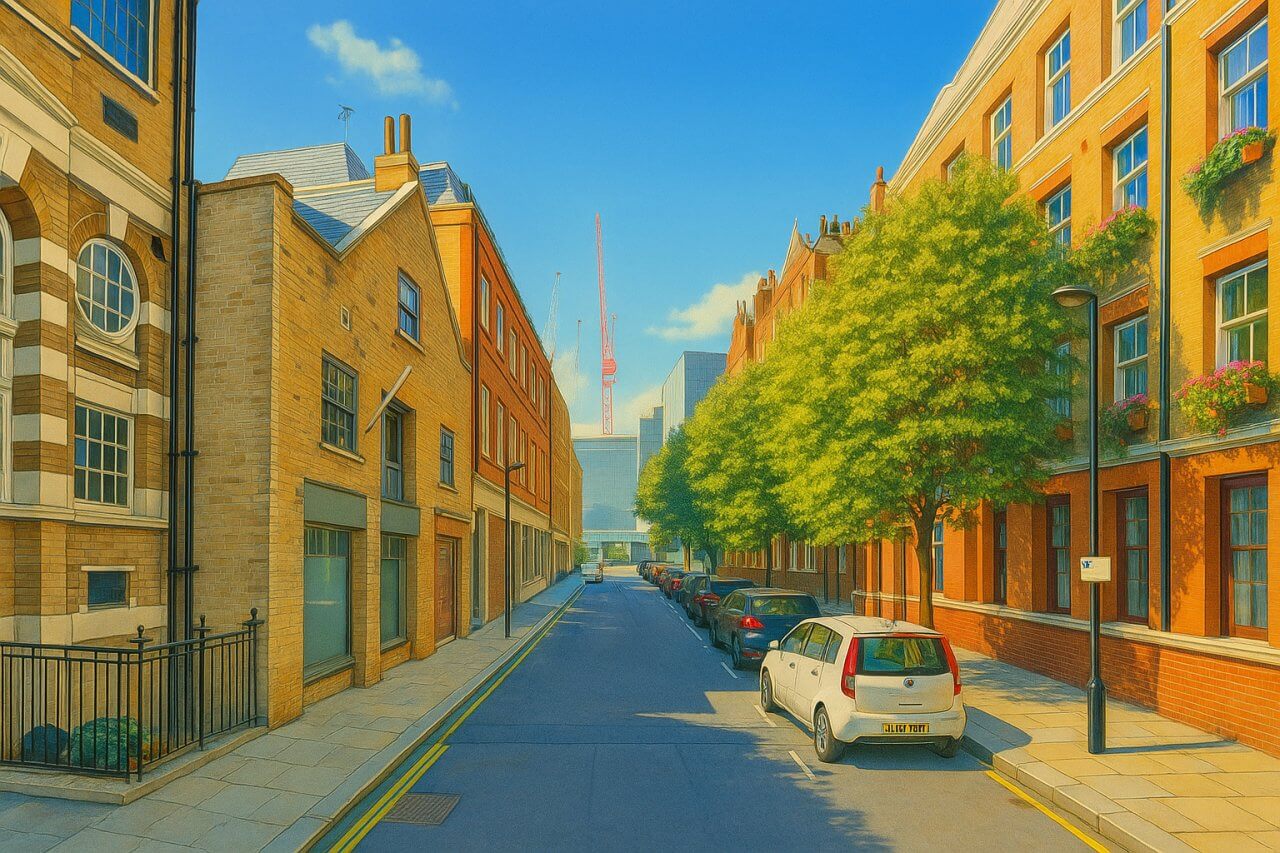
Parker Street, London
Parker Street is a short yet significant street nestled in the City of Westminster, located in the heart of London. It runs in a southwesterly direction, connecting Kingsway in the northeast to Drury Lane in the southwest. Roughly a third of the way along its course, it is intersected by Newton Street, creating a visual break in its urban flow. The segment from Kingsway to Newton Street is a one-way stretch, guiding traffic westward from Kingsway. Though modest in length, Parker Street forms a crucial connective thread in the urban fabric of the West End.
Setting and Surroundings
Parker Street lies in a vibrant, historically rich district characterised by elegant architecture, theatres, and a dynamic mix of residential and commercial properties. To the northeast, Kingsway serves as a bustling arterial route, while to the southwest, Drury Lane leads deeper into the theatre quarter of the West End. Streets such as Newton Street, Keeley Street, and Wild Street are nearby, forming a compact yet lively network of lanes and alleys that reflect central London’s charm.
The general atmosphere of Parker Street is quieter than many of its neighbours, making it a subtle retreat within a very busy quarter. However, the street is still very much within walking distance of several major attractions, shopping areas, and restaurants.
Origin of the Name and Pronunciation
The name Parker Street likely originates from a landowning family or individual surnamed "Parker", a common naming practice in Georgian and Victorian London. Unfortunately, historical records do not pinpoint a definitive namesake, but it is believed the name was established during the 18th or early 19th century as part of the area's gradual urban development.
The pronunciation of Parker Street is straightforward: PAR-kər Street, and its phonetic spelling in the International Phonetic Alphabet is /ˈpɑː.kə ˌstriːt/.
Historical Background
Parker Street is part of a district that saw rapid transformation in the 18th and 19th centuries, evolving from semi-rural estates into the dense urban core of the West End. Its establishment likely coincided with the expansion of nearby roads such as Drury Lane and Long Acre, which served as major east-west thoroughfares. As Holborn and Covent Garden grew in prominence, smaller streets like Parker Street became essential for local access and housing development.
Although it has never been a major thoroughfare, its centrality made it a useful and well-placed backstreet, supporting both the residential and commercial life of surrounding streets. Today, it retains much of its period charm, with several buildings showcasing Edwardian and Victorian architectural details.
Points of Interest Nearby
While Parker Street itself is relatively quiet, it is mere steps away from some of central London's most iconic locations:
- The Gillian Lynne Theatre on Drury Lane, known for long-running musicals.
- Lincoln’s Inn Fields, London’s largest public square, offering green respite just a short walk east.
- Long Acre, a shopping street connecting Covent Garden to Charing Cross Road.
- Nearby educational institutions like Central Saint Martins’ former site on Southampton Row.
Transport Connections
London Underground
Parker Street is well-served by nearby London Underground stations. The closest is Holborn Station, situated a 5-minute walk northeast, and served by the Central and Piccadilly lines. Slightly further east is Chancery Lane Station, accessible via the Central line and ideal for commuters heading into the City.
Bus Routes
There are several bus stops along Kingsway and High Holborn. These stops are served by numerous routes including the 1, 68, 91, 168, and 188, providing easy access across central London, including direct routes to Waterloo, Euston, Tottenham Court Road, and Elephant & Castle.
Residential Property and Real Estate Market
Due to its prime location in the West End, property on and around Parker Street is in high demand. As of June 2025, residential flats in the area typically range from 500 sq ft (46 sq m) for one-bedroom units to over 1,200 sq ft (111 sq m) for larger, high-spec apartments.
Sales prices vary depending on size and finish, but generally fall in the range of £850,000 to £1.6 million. Rental prices for one-bedroom flats range from £2,800 to £4,000 per month, while larger flats can command upwards of £6,000 monthly. These rates are in line with high-end West End properties, particularly due to the street’s proximity to theatres, law chambers, and universities.
Fun Fact
A section of Parker Street was used as a filming location for background scenes in several television productions due to its classic Edwardian façades and limited traffic. Its muted presence offers directors a controllable and atmospheric urban backdrop for scenes meant to evoke “hidden London.”
Quick Facts
- Location: City of Westminster, West End, London
- Connects: Kingsway (northeast) to Drury Lane (southwest)
- Intersected by: Newton Street
- Traffic: One-way from Kingsway to Newton Street
- Nearest Tube: Holborn Station (Central & Piccadilly lines)
- Nearby bus routes: 1, 68, 91, 168, 188
- Nearby attractions: Gillian Lynne Theatre, Lincoln’s Inn Fields, Long Acre
- Average home size: 500–1,200 sq ft (46–111 sq m)
- Property prices (2025): £850,000–£1.6 million (sales); £2,800–£6,000/month (rent)
- Pronunciation: /ˈpɑː.kə ˌstriːt/
References
- Rightmove UK property listings – June 2025
- Transport for London Bus Routes Map
- National Library of Scotland – Historical Maps of London
Map of Parker Street, London
 Painting of Parker Street, London
Painting of Parker Street, London